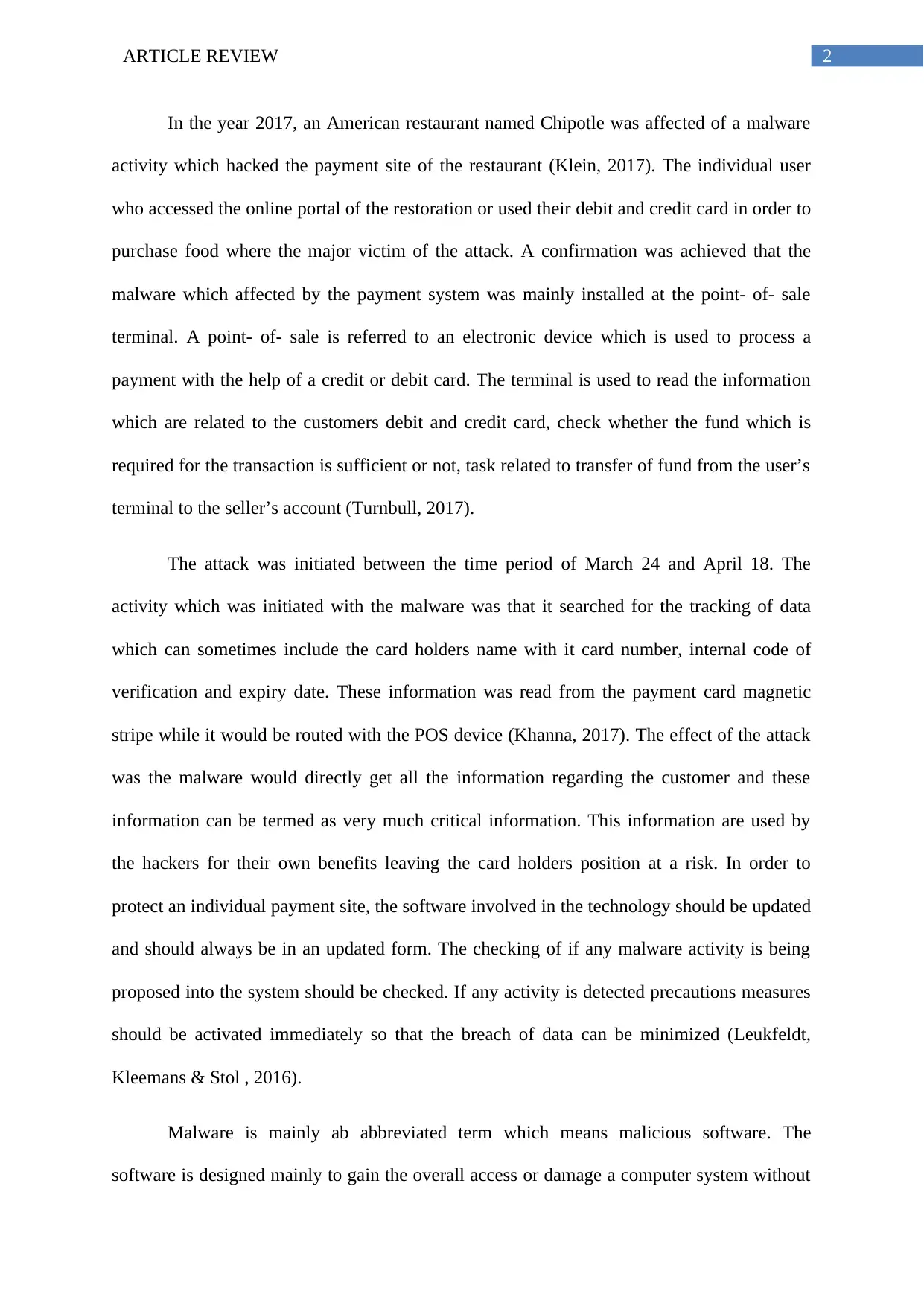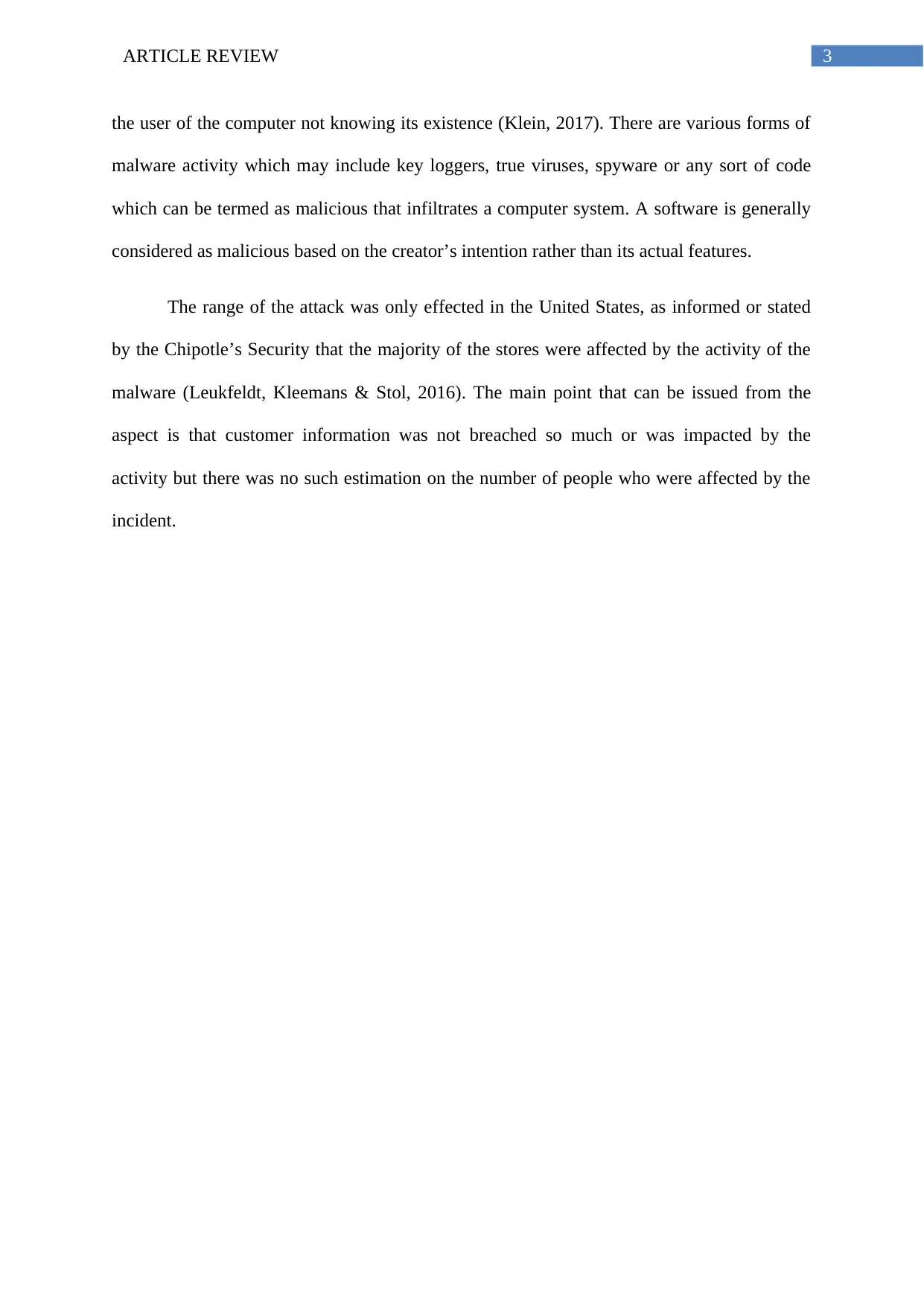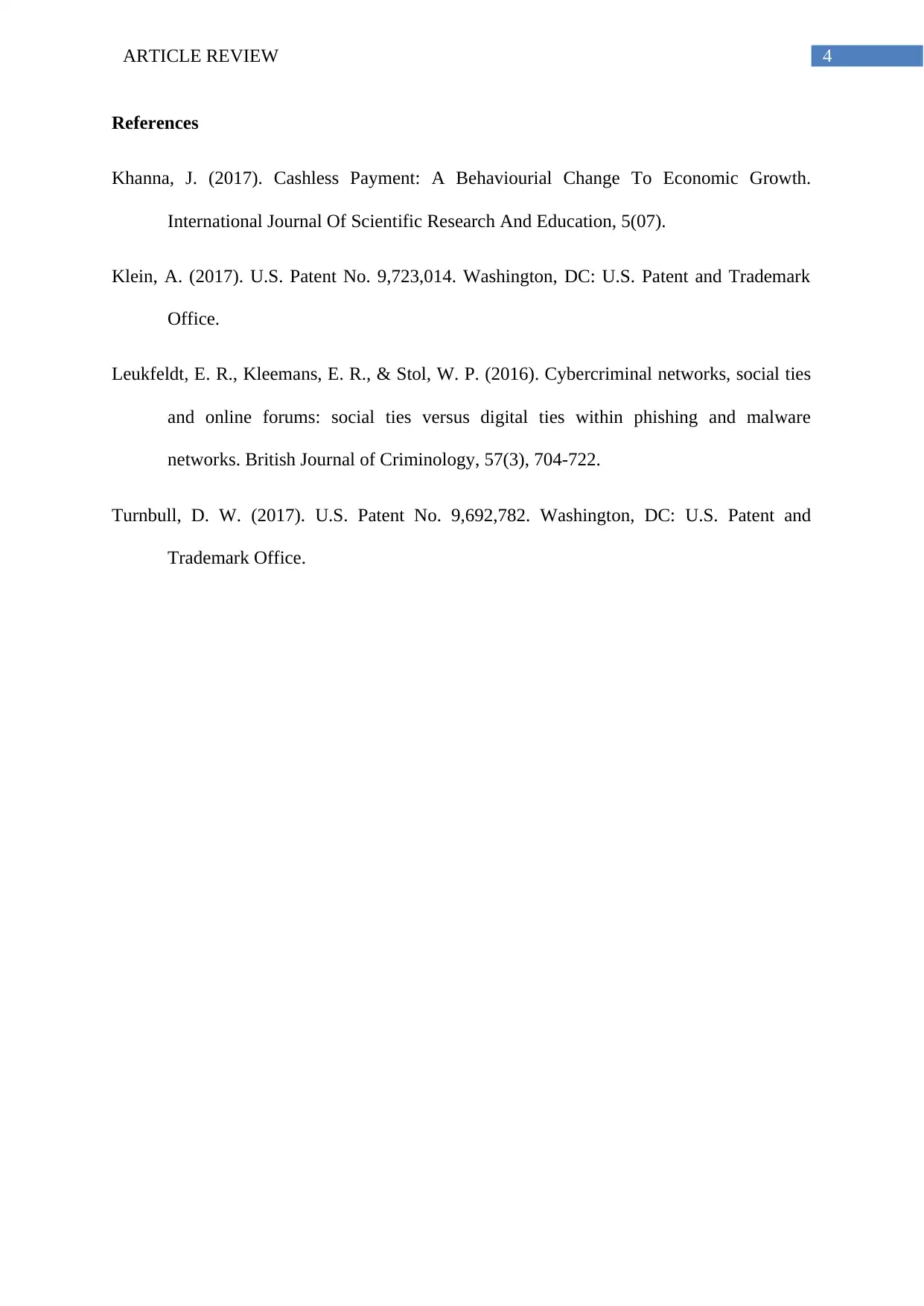Chipotle Malware Attack: A Review of Security Breach and Impact
VerifiedAdded on 2019/11/25
|4
|710
|384
Report
AI Summary
This report is an article review focusing on a 2017 malware incident affecting Chipotle, a popular American restaurant chain. The attack targeted the restaurant's payment system, specifically point-of-sale terminals, compromising customer debit and credit card information. The malware, active between March 24 and April 18, searched for sensitive data like cardholder names, card numbers, verification codes, and expiry dates. The review emphasizes the importance of updated software and proactive malware detection to minimize data breaches. The report references several sources, including research on cashless payments, patent information, and studies on cybercriminal networks and malware. The incident highlights the vulnerability of payment systems and the need for robust security measures to protect customer data. The review stresses the potential impact on cardholders and the necessity for continuous security updates.
1 out of 4











![[object Object]](/_next/static/media/star-bottom.7253800d.svg)